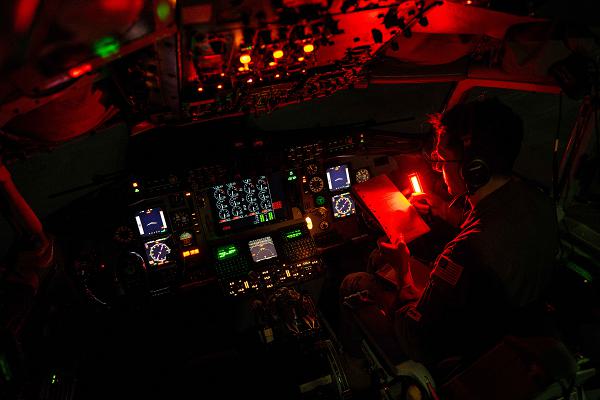
MacDill Air Force Base, Florida. (July 20, 2024): The Air Force KC-135 Stratotanker is famous for its role as a “flying gas station” that extends America’s reach worldwide. Less celebrated is the role the KC-135 plays as a “flying ambulance” used to transport litter and ambulatory patients during aeromedical evacuations. In this photo by Senior Airman Lauren Cobin, Captain Jake Koehnke, a pilot assigned to the 91st Air Refueling Squadron, performs preflight checks on a KC-135 Stratotanker as it prepares for a training mission. This giant airplane has provided the core refueling capability for the Air Force, Marines, Army, and Navy aircraft for more than sixty years.
The first recorded instance of using aircraft for evacuating patients took place in 1910 when two Army medical officers used their own money to design the first air ambulance. The program had a shaky start, however, as the plane travelled only five hundred yards before it crashed. During World War II, the Army established mobile hospitals (MASH) units near the front lines to improve survival rates. During the Vietnam War, it took an average of 45 days to return severe casualties to the United States and the survival rate was 75 percent. By the time of Operation Desert Storm, in 1991, getting wounded patients home averaged 10 days, but their survival remained stubbornly at 75 percent.
Today, the Air Force has gotten the time down to three days or less from virtually anywhere on the planet, and as for the survival rate, a 98 percent chance of living.” The Air Force credits two major factors that account for this improvement in survival rates, sophisticated care enroute and improved evacuation techniques to move critical patients more safely and effectively.
Care is administered by a medical crew that includes two flight nurses and three medical technicians. The crew establishes a “flying emergency room” complete with surgical teams with a physician, a critical care nurse, a respiratory therapist, and an array of other nurses and technicians to look after a severely wounded patient in flight.
The Air Mobility Command is charged with managing America’s KC-135 fleet of 396 tankers and four active-duty squadrons are dedicated to aeromedical evacuation, two in the U.S. and one each in Europe and the Pacific. The Air Force plans to retain the fleet until at least 2050.


